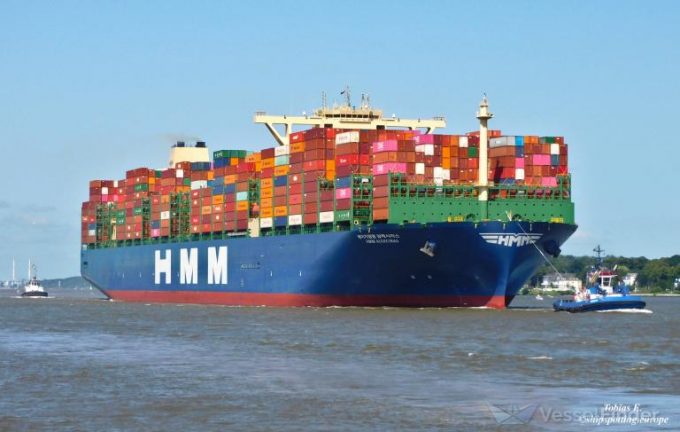CMA CGM to launch China-Mexico express shipping service
More evidence of the burgeoning direct trade between China and Mexico was on show yesterday ...

With Asia-South America ocean freight rates at an 18-month high of around $4,350 per 40ft, mainline operators have been adding ships and calls to their services.
HMM told The Loadstar that from 26 May, it would add another Brazilian port of call, Rio Grande, to its Far East-India-Latin America (FIL) service, while omitting Buenos Aires in Argentina and Montevideo in Uruguay. In Rio Grande, the ships will call at the Tecon terminal.
Thereafter, FIL will call Busan, Shanghai, Ningbo, Shekou, Singapore, Kattupalli, Rio Grande, Santos, Paranagua, Navegantes, Singapore, Hong Kong, and Busan with 11 ships of 4,700-6,300 teu, turning around in 11 weeks, instead of 12.
HMM’s spokesperson explained: “Due to the severe port congestion on the east coast of South America, HMM has added a call at Rio Grande to improve schedule reliability.”
Reportedly shallow draughts around Argentina and Uruguay limit the loading capacity of the ships on the FIL service. Feedering to the two ports will be provided by Singapore-based Bengal Tiger Line from Rio Grande.
HMM’s move coincides with expanded capacity on two Asia-South America east coast (ECSA) services operated jointly by CMA CGM, Cosco, OOCL, Evergreen, PIL and Yang Ming.
From 5 May, the first string, marketed as SEAS2/ESA2/TLA2/ESA3/SSA respectively, will call Tianjin (Xingang), Qingdao, Shanghai, Ningbo, Shekou, Singapore, Rio de Janeiro, Santos, Paranagua, Itapoa, Navegantes, Santos, Colombo, Singapore, Hong Kong, and Tianjin.
Tianjin, Rio de Janeiro and Colombo have been added to this service, which will turn in 12 weeks using 12 ships of 10,000 to 14,100 teu, starting with the 14,100 teu Cosco Argentina at Tianjin, with Cosco and CMA CGM each contributing six vessels, and Yang Ming taking slots on the service, which it will market as SA5.
Average vessel capacity will be increased from 10,400 teu to around 13,000 teu.
The second string, branded as SEAS1/ESA/TLA1/ESA/SA2/SA3 respectively, will call Shanghai, Ningbo, Yantian, Hong Kong, Rio de Janeiro, Santos, Navegantes, Montevideo, Buenos Aires, Paranagua, Santos, Singapore, Hong Kong, and Shanghai.
While no new ports of call have been added, the service will up its average weekly capacity from 10,900 teu to 11,000 teu, with 13 ships of 9,000 to 13,200 teu, starting with the 9,466 teu Ever Leader from 10 May, with seven ships from Evergreen, two ships each from Cosco and PIL, and one ship each from CMA CGM and Yang Ming.
Drewry’s senior manager (container research), Simon Heaney, told The Loadstar Asia-to-ECSA volumes had increased 14% year on year in 2023, compared with 0.4% for the world average.
He added: “The surge in demand kicked in from Q2 23 and, when coupled with less aggressive capacity additions, saw ships sailing full ever since, according to our research. This is clearly fertile ground for rate growth and it doesn’t surprise me that carriers are deploying more capacity here to take advantage.”
Xeneta’s chief analyst, Peter Sand added that the relatively lower capacity additions had supported firm Asia-ECSA rates. On a monthly average, capacity has ranged from 35,000 to 52,000 teu a week.
He said: “It’s a trade where carriers aren’t providing a consistent level of capacity on a weekly basis. Demand grew by 25% in January to February. It’s one of those trades that are most volatile, if you watch non-mainland trades.”
Comment on this article